The man who stole America’s stealth fighter secrets for China
- By Alex Hollings
Share This Article

It’s not uncommon to hear people say that China’s most advanced stealth fighters, the in-service Chengdu J-20 and forthcoming Shenyang FC-31, incorporate stolen design elements from existing American and Russian fighter programs. Russian allegations of copycat technology are born largely out of overall similarities between the J-20 and Russia’s long-defunct MiG 1.44 program. However, although Russian allegations leave at least some room for debate the same can’t be said for China’s theft of American stealth fighter designs.
In March 2016, a 51-year-old Chinese national named Su Bin pled guilty to charges associated with what the American Justice Department described as a “years-long conspiracy” conducted in concert with high-ranking members of the Chinese military to steal American military secrets – most notably, the designs for advanced stealth fighters like the F-22 and F-35.

“Su admitted that he conspired with two persons in China from October 2008 to March 2014 to gain unauthorized access to protected computer networks in the United States – including computers belonging to the Boeing Company in Orange County, California – to obtain sensitive military information and to export that information illegally from the United States to China,” reads the Justice Department release.
Su Bin, who worked in Canada under the name Stephen Su, was a well-regarded businessman and entrepreneur in the aviation industry, serving as the sole proprietor of a small company that specialized in aircraft cable harnesses. This company, called Lode-Tech, was described by the Air Force Office of Special Investigations as a “small player” in the field, with only a handful of employees and limited access to broader aviation programs.
However, despite the minimal reach of Lode-Tech, Su Bin himself worked tirelessly to establish in-roads within the Canadian and American defense industries, forming an extensive network of business contacts that, over time, allowed him to gain increasingly unfettered access to internal networks maintained by a variety of American and Canadian defense contractors.
As Bob Anderson, the FBI’s former head of counterintelligence, put it, “he cultivates you over time.”
China began formal development on its first stealth fighter, meant to compete directly with Western jets like the F-22, in 2008, awarding the Chengdu Aerospace Corporation a developmental contract meant to mature its Project 718 design proposal.
Starting that same year, Su began working directly with two professional hackers employed by China’s People’s Liberation Army, using the information he’d gained through his business contacts to enable the theft of more than 630,000 files from Boeing – a massive 65 gigabytes of data – related to the C-17 heavy-lift cargo aircraft. But Su had his sights set on an even bigger prize: information regarding America’s stealth fighter programs.
Related: Beating China could mean bringing the C-130 back to aircraft carriers

Over time, Su’s ability to win over business contacts enabled the theft of even more information mostly on the development of Lockheed Martin’s F-22 Raptor and F-35 Lightning II. While Su did not immediately have access to Lockheed Martin’s networks, these aircraft were not designed or built solely within the halls of Lockheed Martin. Both of these fighters represent the efforts of a chorus of contractors and subcontractors, with design specifications shared across firms for the sake of manufacturing.
When people took note of Su’s interest in these classified programs, he assuaged their concerns by pointing out that he was only asking about specific, seemingly unimportant things.
“Su would say, ‘I’m not asking you to give me the F-35, but what’s it matter if I get one system out of it that we could sell to a friend or a prospective client?’” said Anderson. “And then go from there, and it takes time.”
Over at least six years, Su and his hackers would gain access to tens of thousands of files associated with these stealth fighter programs.
Correspondence between Su and his team shows he not only provided overall direction and guidance for this effort, but he even worked to translate the stolen information into Chinese, going so far as to draft formal reports for the PLA’s General Staff Headquarters on the material they managed to steal.

Su and his co-conspirators may have worked tirelessly to gain access to this information, but they worked just as hard to cover their tracks. FBI counter-intelligence experts traced their work through multiple third-party nations, where they had established “hop points” – a term used to describe compromised or purchased intermediary networks meant to disguise the infiltration’s actual point of origin.
In 2009, six current and former government officials confirmed with the Wall Street Journal that the Joint Strike Fighter Program that produced the F-35 had been accessed multiple times by Chinese hackers, who had secured several terabytes of information regarding the aircraft’s design and systems. At the time, Pentagon officials explained that the hackers used a method that encrypted data as it was being stolen, making it difficult to assess what specific data had been compromised. However, it is worth noting that some of the most secretive systems being developed for the aircraft are kept isolated from broader network access to avoid these sorts of security breaches. Nonetheless, this revelation was the beginning of the end for Su and his team.
In one 2011 e-mail entered into evidence, Su bragged to his Chinese contacts that the information they stole from the F-22 and F-35 programs would “allow us to rapidly catch up with U.S. levels … To stand easily on the giant’s shoulders.”
Beginning in 2011, in what Chinese officials might describe as little more than coincidental timing, the J-20 fighter design that had been maturing since 2008 suddenly adopted several significant – and stealthy – changes. These changes wouldn’t manifest in a new prototype, however, for three more years.
By 2013, Su had also established connections with GE Aviation in Cincinnati – a firm renowned for advanced turbofan technologies that China has struggled to develop for its own stealth fighters. It’s worth noting that both the F-22 and F-35 are powered by Pratt & Whitney powerplants, but GE was responsible for competing designs meant for service aboard these jets. According to Defense Department insiders, GE’s YF120 turbofan proposal for the F-22 Raptor was actually the more advanced and capable design. Pratt’s YF119 engine ultimately won out due to its simplicity and the lower risk associated with relying on more mature and proven technologies.
In March 2014, China’s new and improved J-20 design finally emerged, incorporating modified diverterless supersonic inlets (DSI), redesigned vertical stabilizers, and more. When pictures of the new J-20 first reached the internet, multiple defense outlets highlighted the now even more pronounced similarities to Lockheed Martin’s stealth fighters.

As well-known aviation journalist David Cenciotti reported at the time, the J-20’s newly redesigned nose, in particular, bore a striking resemblance to the F-22 and F-35. That same year, USNI News contributor Feng Cao also drew direct comparisons to America’s stealth fighters, even highlighting its change in color to “F-22 grey,” likely a sign of improved radar-absorbent skin. Defense outlet War is Boring was so taken by the improved features of the new J-20 design that they ran a story with the headline, “China’s Latest Stealth Fighter Prototype Has, Well, Actual Stealth Features.”
Now, it is important to note that not all of the design changes to the J-20 are easily attributed to espionage. Some changes and improvements can be traced to on-record developmental efforts within Chinese academia… but not all of them. Nonetheless, the new-and-improved J-20 could be seen as a massive victory for Su Bin and his espionage efforts… but he wouldn’t have much time to celebrate. At right around the same time the new J-20 prototype was revealed to the world, the U.S. Department of Justice filed a criminal complaint and subsequent indictment against Su for the theft of thousands of files associated with American defense efforts. Four months later, in July 2014, he was arrested by Canadian authorities.

While the FBI is traditionally responsible for investigating these sorts of crimes, the Air Force’s Office of Special Projects (PJ), a subset of the Office of Special Investigations, ultimately played a vital role in securing Bin’s arrest and extradition to the United States thanks to their ability to work directly with defense contractors and senior U.S. government officials, including members of the Air Force’s C-17 program office and others within Lockheed Martin itself.
American law enforcement eventually managed to access the messages exchanged between Su, his hackers, and Chinese military officials in which they wrote and revised formal reports for the People’s Liberation Army outlining their efforts and the data they’d managed to steal. The collection of stolen files combined with this correspondence left the charges all but irrefutable, and Su opted to wave the extradition hearing and be transferred directly to the United States.
Initially, Su was facing 30 years in prison for his crimes, but he quickly accepted a plea agreement, providing his full cooperation to American authorities in exchange for a much shorter 46-month sentence.
Despite the breadth of Su’s theft, many of the documents he and his hackers stole were not, strictly speaking, classified or even export-controlled. However, as the Air Force pointed out in 2016, even these less-significant thefts, in aggregate, allowed the Chinese military to reverse-engineer a wide variety of aircraft components that would otherwise have cost millions to develop from scratch, saving not only money, but a great deal of time associated with research and development.
Related: Pakistan wants to fly Chinese stealth fighters alongside its F-16s

“Su Bin admitted to playing an important role in a conspiracy, originating in China, to illegally access sensitive military data, including data relating to military aircraft that are indispensable in keeping our military personnel safe,” said Assistant Attorney General Carlin.
Su’s unearthed correspondence, the timeline of design changes incorporated into the Chengdu J-20 stealth fighter, and his subsequent admission of guilt, all point directly to China’s theft, and use, of Lockheed Martin design elements in its own fighter programs, though this idea remains the subject of debate within Pentagon and aviation circles to this day.
The J-20 is obviously not a direct copy of the F-22, and assertions that it would need to be to benefit from this sort of technological theft reflect a lack of understanding of fighter design. A tactical aircraft is, fundamentally speaking, not one thing, so much as a broad collection of components and design cues married to one another through functional form. Like a child bearing only a slight visual resemblance to her parents, genetic similarities run more than skin deep.
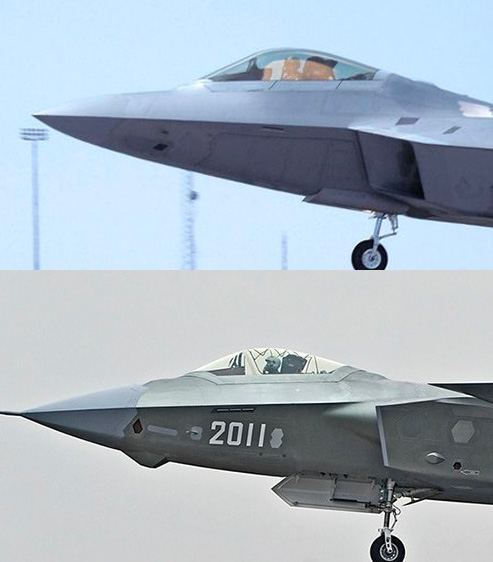
Yet, the most conspicuous similarities between Chinese and American stealth fighters are, nonetheless, fairly easy to spot. Despite the J-20’s overall delta-wing and canard design resembling Russia’s defunct MiG 1.44 stealth fighter effort, the radar-reflecting design cues leveraged by the F-22 and F-35 are readily visible in the Chinese fighter.
Some have disputed this in recent years by alleging that these similarities are based not on theft, but physics, claiming that these shared design elements are the inevitable result of any fighter design meant to marry aerobatic performance to low-observability. This claim would seem to be substantiated by numerous other stealth fighter programs in development today that also bear a striking resemblance to America’s F-22 or F-35, like Turkey’s KAAN, South Korea’s KF-21, or India’s AMCA.

The truth, however, is that both the Indian and South Korean stealth fighter efforts saw direct engineering support from Lockheed Martin, and Turkey’s KAAN fighter began development in 2016, three years before the country was removed from the F-35 program. These fighters bear a resemblance to Lockheed Martin’s because they all have benefitted from access to Lockheed Martin’s design efforts.
The idea that all stealth fighter designs will ultimately mature in the shape of an F-22 can be easily dismissed by simply looking over the competing stealth fighter developmental efforts from other firms that ultimately didn’t see production for one reason or another. Boeing’s admittedly goofy-looking X-32 and Northrop’s legendary YF-23, both jets that competed and lost against Lockheed entries, were not only broadly comparable in terms of stealth, but it’s widely understood that the YF-23 was even stealthier than the YF-22 that matured into today’s Raptor.
Other stealth aircraft efforts like Northrop’s Tacit Blue, Boeing’s YF-118G Bird of Prey, NASA’s X-36, McDonnell Douglas’s A-12 Avenger II, and more all represent different approaches to low-observable tactical aircraft design that bear little resemblance to Lockheed Martin’s approach.
Related: Why stealth helicopters are so hard to design

Put simply, Lockheed Martin didn’t uncover the one-and-only approach to stealth fighter design in the early 1990s, leaving the rest of the world with no choice but to follow in its footsteps. Instead, Lockheed Martin offered the U.S. military the most viable combination of performance, stealth, and political support necessary to see its jets go into production. Since then, Lockheed Martin’s success with these designs has positioned it to support American allies and partners in their own developmental efforts, resulting in a great deal of similarity across some foreign designs.
China’s use of Lockheed Martin design elements in its stealth fighters, then, does not represent the inevitable result of radar and wind-tunnel testing, but rather a concerted effort to bridge the gap between Chinese and American fighter technology through a combination of direct theft and a fair bit of traditional domestic R&D.
So what does this ultimately mean for China’s J-20 or their new stealth fighter in development, the FC-31 (sometimes also known as the J-35)? Espionage has always played a role in the advancement of military technology and will continue doing so as long as wars are waged. These fighters do not need to match their American counterparts in all performance metrics to represent a potent threat to American security and interests, and indeed, they likely don’t. Their real value is as part of a broader defensive strategy and air warfare doctrine that China is still actively developing as we speak, and as such, the ultimate impact of these platforms has yet to fully manifest.
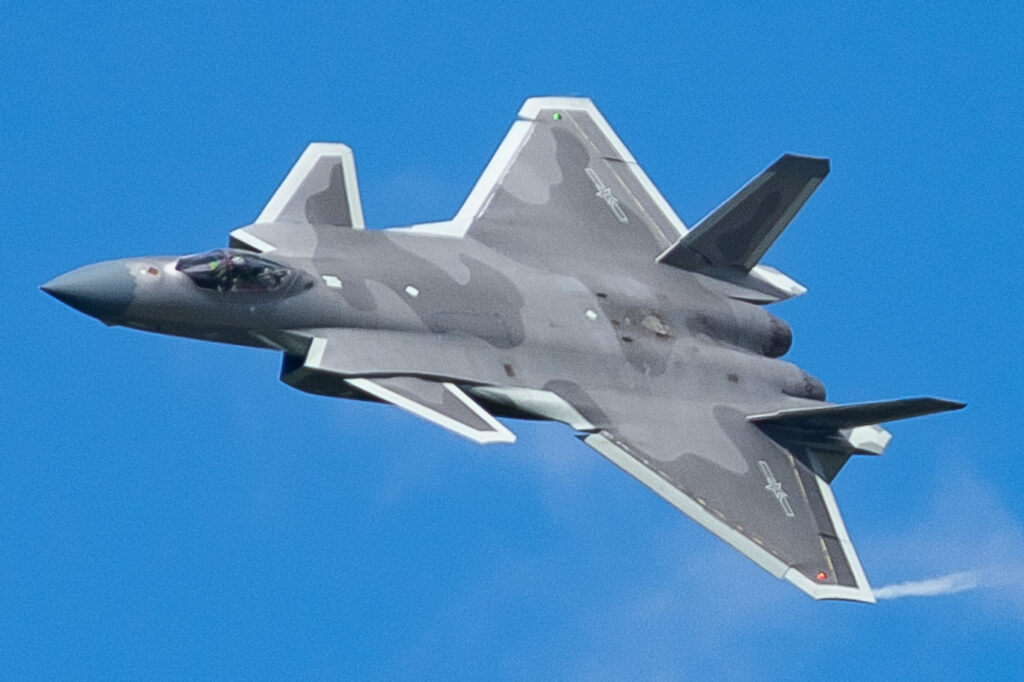
It would be a mistake to dismiss these copycat fighters as little more than designer-imposter jets with no real combat prowess due solely to their use of stolen design elements. A Hi-Point pistol may look like a Glock run through a broken copy machine and may not offer the same accuracy, reliability, or ease of maintenance… but that’s little solace to anyone who’s been shot by one. And the truth is, a highly trained special operator armed with nothing more than a cheap pistol may be even more dangerous to an opponent than a dummy like me with the fanciest Sig money can buy.
Effective employment strategies and tactics can often offset technological shortcomings, and as such, China’s employment of stealth technologies in new fighter designs doesn’t need to be as refined as America’s. With the right strategy, training, supporting systems, and personnel, the underdog can always come out on top.
So, did China steal F-22 and F-35 designs to benefit its ongoing fighter efforts? The answer is unequivocally yes.
But is that a reason to dismiss the threat posed by these aircraft and others to follow?
The answer there is unequivocally no.
Read more from Sandboxx News
- Lighten the load: The Army’s plan to save time by shedding excess gear
- F-35 pilot explains how an F-117 was shot down in 1999
- V-22 Osprey is facing an uncertain future despite its unique capability
- There’s no need to panic about the ‘national security threat’ announcement
- All about the Army’s Athlete Program sending a marathoner to the Olympics
Related Posts
Sandboxx News Merch
-

‘AirPower’ Classic Hoodie
$46.00 – $48.00 Select options This product has multiple variants. The options may be chosen on the product page -

‘Sandboxx News’ Trucker Cap
$27.00 Select options This product has multiple variants. The options may be chosen on the product page -

F-35 ‘Lightning’ Framed Poster
$45.00 – $111.00 Select options This product has multiple variants. The options may be chosen on the product page

Alex Hollings
Alex Hollings is a writer, dad, and Marine veteran.
Related to: Military Affairs
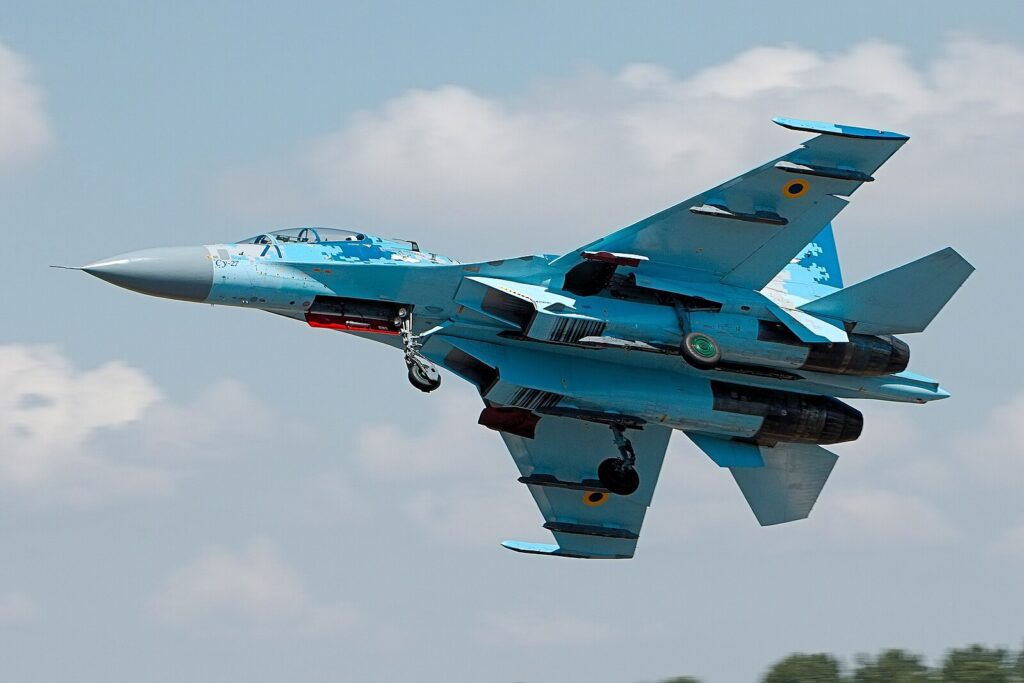
Where do NATO reporting names come from?

How US Special Forces took on Wagner Group mercenaries in an intense 4-hour battle
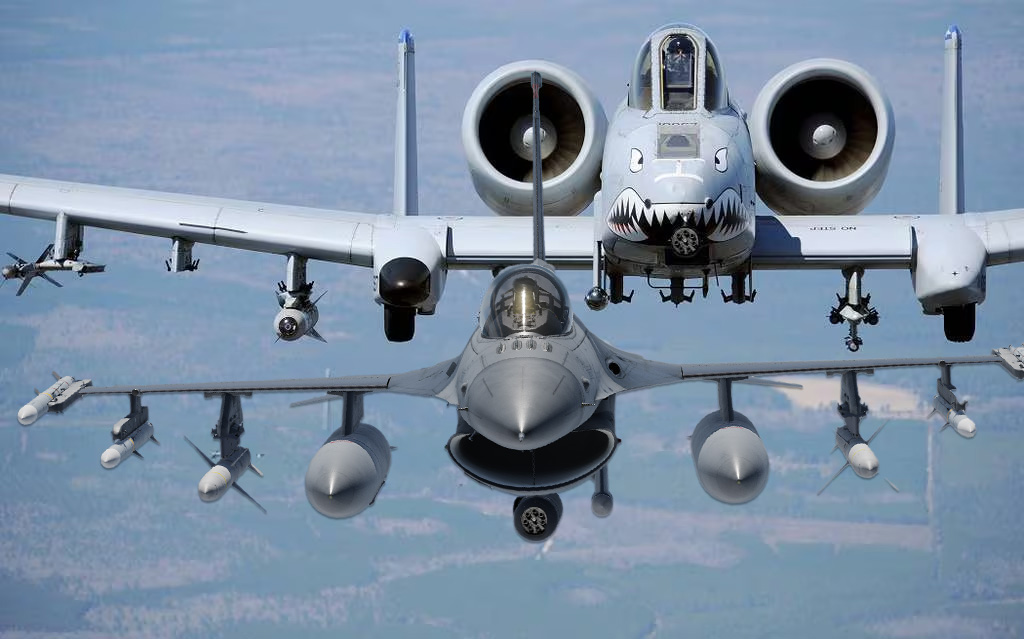
F-16s carrying the A-10’s 30mm cannon actually saw combat
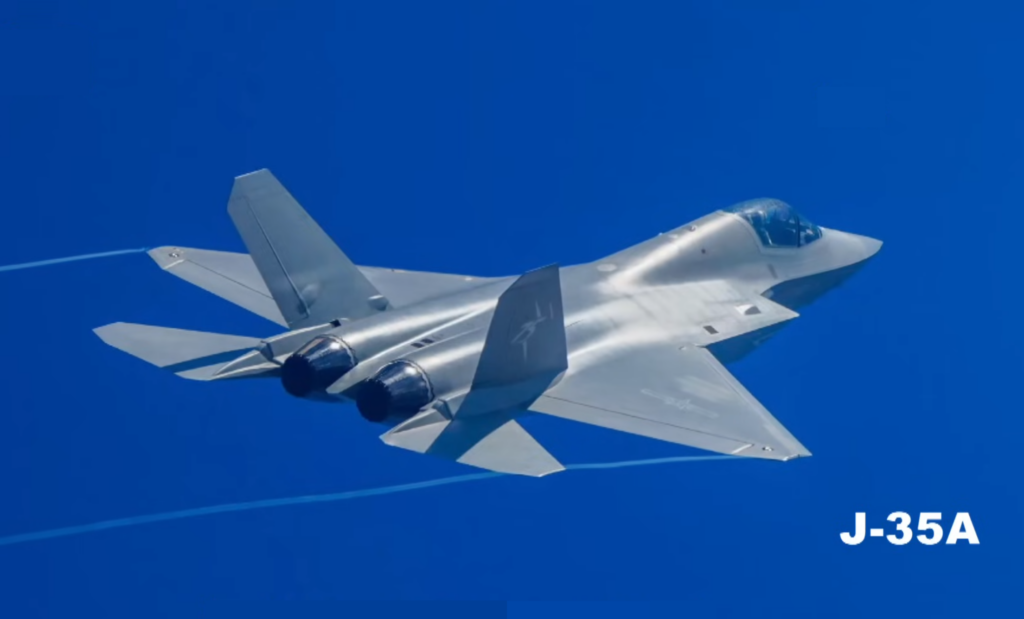
How does China’s new J-35 stealth fighter compare to America’s F-35?
Sandboxx News
-

‘Sandboxx News’ Trucker Cap
$27.00 Select options This product has multiple variants. The options may be chosen on the product page -

‘AirPower’ Classic Hoodie
$46.00 – $48.00 Select options This product has multiple variants. The options may be chosen on the product page -

‘AirPower’ Golf Rope Hat
$31.00 Select options This product has multiple variants. The options may be chosen on the product page -

‘Sandboxx News’ Dad Hat
$27.00 Select options This product has multiple variants. The options may be chosen on the product page
